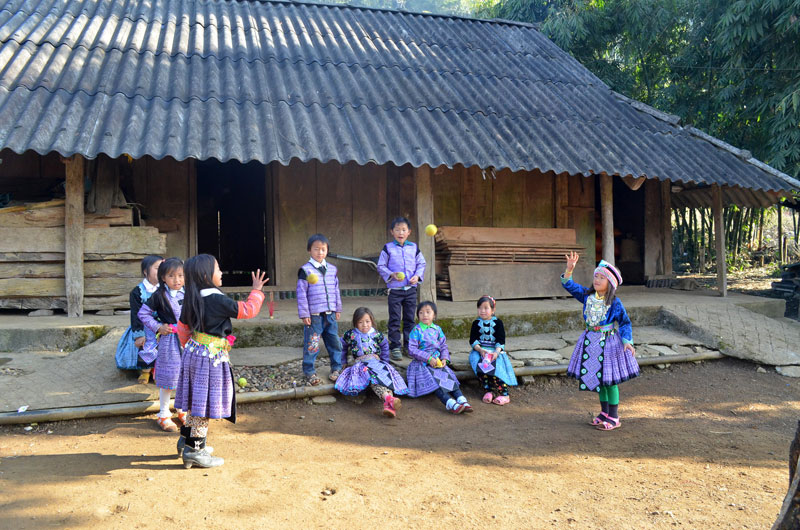



Vang A Chenh invited his guests who were sitting
around the cooking fire at the centre of the house to drink warm home-made corn
wine. The host also served his guests with a melody played on "khen” (panpipe),
a traditional musical instrument of the Mong ethnic group.
After the guests had a sip of the wine, Giang A
Trang, deputy head of Hang Kia commune’s public security division, said Tet of the
Mong people began in the early 12th lunar month, when all corn and rice had
been harvested and brought home. During this festival, the Mong people only
spend time enjoying their Tet, which are also the most joyful days. They mark
Tet by a ritual ceremony to see the old year off, welcome the New Year, and
invite their ancestors to come home to celebrate Tet. The Mong people
officially welcome the New Year after this ceremony.
Made from the best glutinous rice, banh day
(round glutinous rice cakes) are an indispensable part of Tet of the Mong
ethnics in Hang Kia and Pa Co. They are an offering during the ritual ceremony
and a key dish for Tet. The steamed rice cakes are also presents for visitors
from afar.
Talking about Tet celebrations of the Mong
people, Vang A Senh said families usually slaughter pigs before Tet and invite
relatives and friends to come to have parties. As Tet is one of the most
important events of the Mong ethnics, they make preparations one month ahead.
At first, they clean soot in kitchens and beams
before tidying up their homes. The Mong people consider the clean-up a critically
important practice as it will remove bad lucks to welcome good lucks in the New
Year.
Local people said Tet of the Mong people is
always special as it has unique cultural customs that cannot be found in any
other ethnic groups. On Tet days, the Mong people traditionally do not spend
money but only visit one another to extend greetings.
Vang A Senh said the Mong people believe that
money is a material asset and needs to be kept at home so that it will multiply
and bring about good lucks for the family. As a result, the Mong people also do
not give lucky money to children during the Tet festival.
To wish for bumper crops and more livestock,
locals keep off stepping on stoves, putting out cooking fire, or lighting fire
on the three first days of the traditional New Year. On these days, they also do
not eat rice soused with soup since they believe that eating rice soused with
soup will make rice fields flooded and lead to poor harvests that year.
Aside from the forbidden things, the Mong people
also have certain practices during Tet that are believed to bring about good
lucks for their families./.